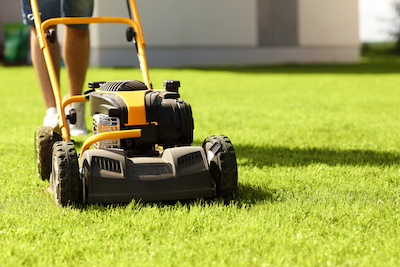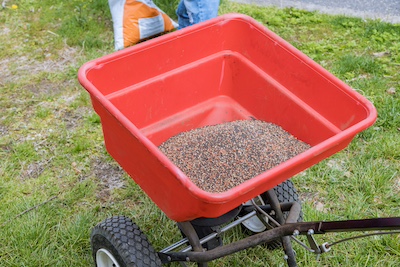How to Use Milorganite Fertilizer for Your Yard
Milorganite fertilizer is a fantastic choice for enriching your garden or lawn. If you’re looking for a step-by-step guide on using Milorganite fertilizer effectively, you’ve come to the right place.
In this comprehensive article, we’ll walk you through the process, provide expert insights, and answer frequently asked questions to help you achieve lush and vibrant greenery.
Choosing the Right Milorganite Fertilizer
Selecting the appropriate Milorganite fertilizer is essential to ensure the best results.
Milorganite offers several formulations that cater to different needs. You can find specific products for gardens, lawns, and more. Consider the type of greenery you’re fertilizing, and always check the label to confirm you’re using the right formulation.
When it comes to quantity, a general rule of thumb is to apply one bag of Milorganite per 2,500 square feet of lawn. Adjust the amount based on your specific needs.
Preparing Your Lawn or Garden
Before applying Milorganite fertilizer, it’s important to carry out a series of preparatory steps to ensure that the application is effective and yields the best results. Let’s break down each of these crucial preparatory steps:
1. Mowing Your Lawn to the Ideal Height
To kick off the preparation process, start by mowing your lawn to the ideal height. The recommended height for most grass types typically falls within the range of 2.5 to 3 inches. Mowing your lawn to this specific height sets the stage for optimal fertilizer absorption and even distribution.
By doing so, you create a uniform surface that allows the Milorganite fertilizer to penetrate the soil evenly and effectively, promoting robust and healthy grass growth.

2. Clearing the Area of Debris and Obstructions
The next crucial step involves clearing the area where you intend to apply Milorganite. Remove any debris, leaves, or other obstructions that may be present. This action ensures that there are no hindrances or barriers that might impede the uniform spread of the fertilizer.
A clean and debris-free surface provides the ideal canvas for Milorganite application, enabling it to reach every corner of your lawn or garden without any irregularities.
3. Ensuring Damp Soil for Application
For the best results, it’s advisable to apply Milorganite to damp soil. To achieve this, water your lawn or garden lightly the day before the scheduled application.
Damp soil serves as the perfect medium for the fertilizer to bind and release nutrients effectively into the root system of your greenery. This step is especially important in arid or dry climates, as it aids in initiating the activation process of the fertilizer, optimizing its performance, and nourishing your plants.
4. Protecting Water Sources from Contamination
Lastly, when applying Milorganite, it’s vital to exercise caution and responsibility. Avoid applying the fertilizer near water sources such as lakes, rivers, or storm drains. This precaution is essential to prevent any potential contamination of these bodies of water.
Applying Milorganite Fertilizer
Milorganite is a safe and eco-friendly fertilizer when used correctly. Still, it’s crucial to be mindful of its proximity to natural water sources to preserve the environment and protect aquatic ecosystems.
By diligently following these preparatory steps, you’re setting the stage for a successful Milorganite fertilizer application that will result in a lush, healthy lawn or garden. These steps ensure that the fertilizer is applied under optimal conditions, maximizing its effectiveness and benefit to your green space.
When it comes to applying Milorganite fertilizer, attention to detail is key to ensure that your lawn or garden reap the full benefits of this fantastic product. Let’s delve into the specific steps involved in applying Milorganite:
1. Using a Spreader for Even Distribution
To begin, it’s highly recommended to employ a spreader for the application of Milorganite fertilizer. Using a spreader is essential for achieving uniform and even distribution of the fertilizer across your lawn or garden.
The key is to set the spreader to the appropriate rate as per the label instructions provided on the Milorganite packaging. This step is pivotal, as it ensures that the fertilizer is dispensed evenly, preventing over-application in some areas and under-application in others.
By adhering to the recommended rate, you’re guaranteeing that your green space receives precisely the right amount of nourishment.

2. Applying the Fertilizer Evenly
Once you’ve armed yourself with a spreader, the next step is to apply the Milorganite fertilizer evenly. As you walk across your lawn or garden, make a conscious effort to cover every inch methodically.
Overlapping slightly with each pass is a prudent approach to avoid leaving any areas untreated. This thoroughness in application guarantees that every part of your greenery receives the same level of nutrient infusion, ensuring consistent and robust growth.
3. Lightly Watering After Application
After you’ve successfully applied Milorganite, it’s essential to follow up with a crucial post-application step – lightly watering the treated area. This serves to activate the fertilizer and initiate its nutrient-release process.
The moisture from the light watering encourages the Milorganite to penetrate the soil and provide your plants with the essential nourishment they need. This simple yet effective step ensures that your lawn or garden begins benefiting from the fertilizer almost immediately.
4. Proper Cleanup
To conclude the application process, it’s important to perform a cleanup. This entails both the spreader you used and your own personal hygiene. After you’ve finished spreading the Milorganite, thoroughly clean the spreader to remove any residual fertilizer.
This prevents any potential cross-contamination and ensures that the spreader remains in good condition for future use. Equally important is washing your hands thoroughly after handling the fertilizer.
Milorganite is safe when used as directed, and this step is just a sensible precaution to prevent any transfer of fertilizer to unintended areas and to maintain personal hygiene.
By meticulously following these steps for applying Milorganite fertilizer, you’re setting the stage for a successful fertilization process. These procedures, when executed with care, guarantee that your lawn or garden will receive the full benefit of this exceptional fertilizer, promoting lush and healthy greenery.
When to Apply Milorganite
Selecting the right timing for applying Milorganite fertilizer is a critical factor in ensuring that you achieve the best possible results for your lawn or garden. Let’s delve into the key considerations for when to apply Milorganite:
Spring and Fall – Ideal Seasons for Application
The timing for applying Milorganite is crucial to maximize its effectiveness. Two prime seasons stand out as ideal for its application – spring and fall. These seasons align perfectly with the periods of active growth for most types of grass.
In the spring, as the weather warms up and nature awakens from the winter slumber, grass and plants experience a surge in growth. By applying Milorganite during this season, you’re providing the essential nutrients your greenery needs to thrive and flourish.
Similarly, in the fall, as the temperatures cool down and plants prepare for winter, they require a nutrient boost to strengthen their roots and prepare for the cold months ahead. Applying Milorganite in the fall sets the stage for healthy, resilient grass and plants in the upcoming spring.
Avoiding Extreme Heat and Dry Conditions
While spring and fall are ideal for Milorganite application, it’s important to avoid extreme heat and dry conditions. Applying Milorganite during extremely hot and dry periods can be counterproductive. In such weather, the risk of fertilizer burn and nutrient loss due to evaporation is higher.
To ensure that Milorganite works optimally and that you’re not wasting your investment, it’s best to steer clear of these conditions. Instead, opt for milder temperatures and favorable weather conditions to allow the fertilizer to work its magic without any hindrances.
Winter Application in Mild Regions
In regions with mild winters, there’s an opportunity to apply Milorganite during the winter months. While grass growth may slow down during winter, it doesn’t come to a complete halt in these areas.
Applying Milorganite in winter helps maintain a steady nutrient supply to your lawn or garden, ensuring that it remains healthy and resilient throughout the colder season. This can be particularly beneficial in regions with mild climates where grass continues to grow, although at a slower pace, even during winter.
By understanding the significance of timing and adhering to these guidelines, you can make the most of Milorganite fertilizer, promoting lush, healthy greenery in your lawn or garden.

Final Thoughts
In conclusion, the process of using Milorganite fertilizer is a straightforward yet essential journey towards achieving a vibrant and thriving lawn or garden. By following the preparatory steps, ensuring even application, choosing the right timing, and adhering to best practices, you’re well on your way to lush, healthy greenery.
Milorganite’s eco-friendly nature and nutrient-rich composition make it a fantastic choice for both seasoned gardeners and beginners.
With this step-by-step guide and expert insights, you can confidently embark on your fertilization journey, knowing that you’re nurturing your green space with care and expertise. So, get ready to witness the transformation of your outdoor oasis into a verdant paradise, all thanks to the power of Milorganite.
FAQs
Can I apply Milorganite fertilizer during the summer?
Yes, you can apply Milorganite during the summer, but do it early in the morning or late in the evening to avoid the heat of the day.
Is Milorganite safe for pets and children?
Milorganite is safe when used as directed. Keep pets and children off the treated area until it’s been watered in.
How long does Milorganite take to show results?
You’ll typically see a noticeable improvement in your lawn or garden within a few weeks of application.
Can I mix Milorganite with other fertilizers?
Using Milorganite as a standalone fertilizer is best to ensure proper and balanced nutrient release.

